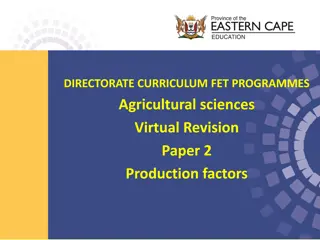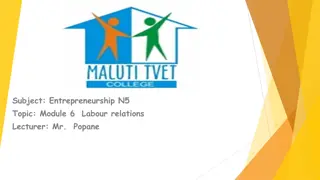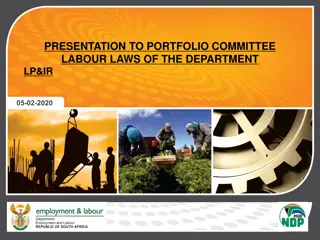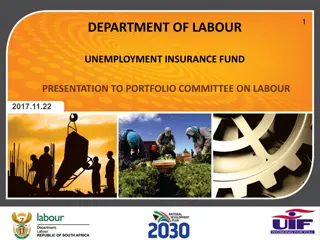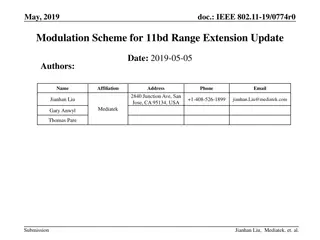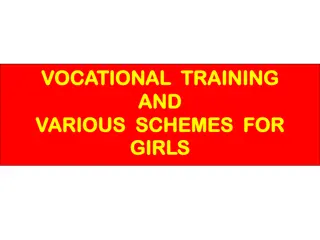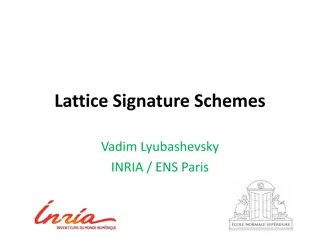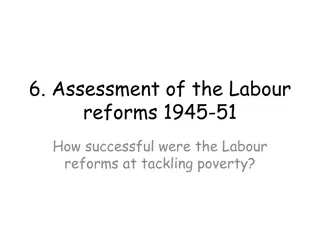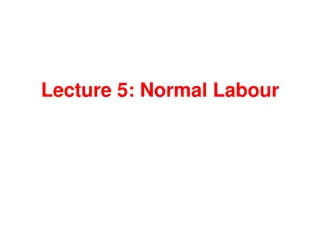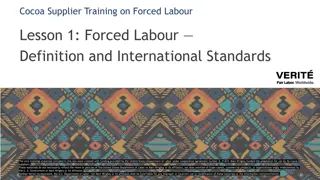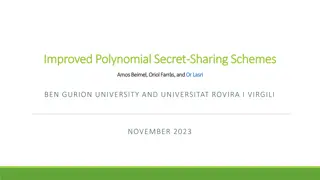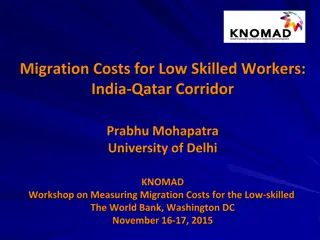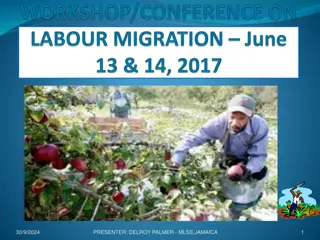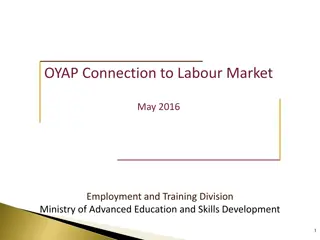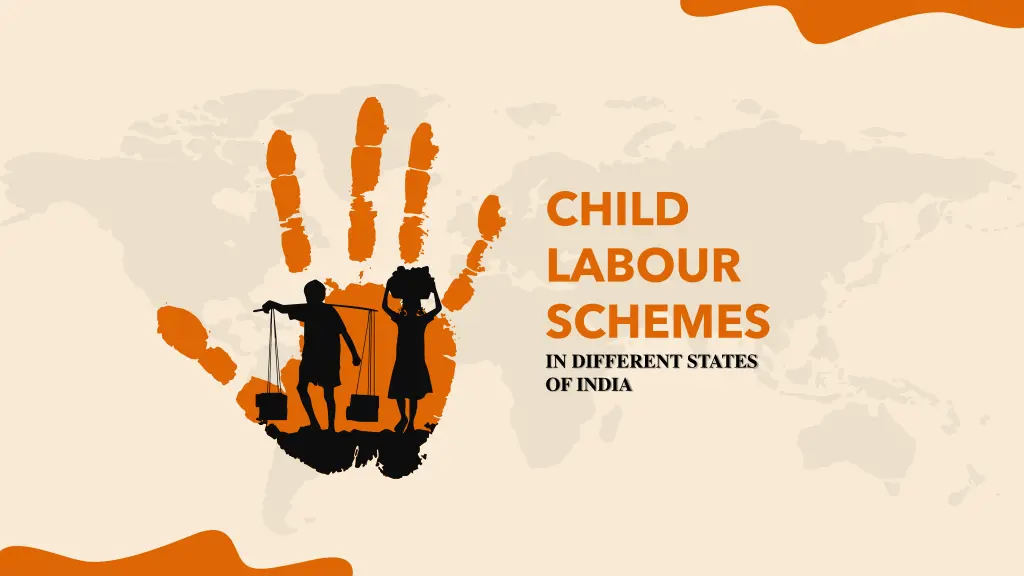
Child Labour Schemes in Andhra Pradesh and Arunachal Pradesh
Explore state-based projects and schemes in Andhra Pradesh and Arunachal Pradesh aimed at eliminating child labour, providing education, healthcare, and support to children, as well as promoting access to quality education and child protection services.
Download Presentation

Please find below an Image/Link to download the presentation.
The content on the website is provided AS IS for your information and personal use only. It may not be sold, licensed, or shared on other websites without obtaining consent from the author. If you encounter any issues during the download, it is possible that the publisher has removed the file from their server.
You are allowed to download the files provided on this website for personal or commercial use, subject to the condition that they are used lawfully. All files are the property of their respective owners.
The content on the website is provided AS IS for your information and personal use only. It may not be sold, licensed, or shared on other websites without obtaining consent from the author.
E N D
Presentation Transcript
CHILD LABOUR SCHEMES IN DIFFERENT STATES OF INDIA
1. ANDHRA PRADESH State-Based Project for the Elimination of Child Labour - Phase II With support from the Government of Andhra Pradesh, institutionalize the pilot approach tested in Phase-I into governance and develop strategies for complete elimination of child labour through State action, involving workers' and employers' organizations and strengthening civil society mechanism. Bala Sanjeevani Scheme: This scheme aimed to rescue and rehabilitate child labourers by providing them with education, healthcare, and other necessary support. Nirudyoga Bruthi Scheme: While not specifically targeting child labour, this scheme provided financial assistance to unemployed youth, which indirectly aimed to prevent children from entering the workforce prematurely. Kishori Vikasam Scheme: This scheme focused on the empowerment and development of adolescent girls, aiming to prevent early marriages and ensure their continued education. National Child Labour Project (NCLP): This centrally sponsored scheme aims to eliminate child labour in hazardous occupations and processes through the identification, withdrawal, and rehabilitation of child labourers. No. of sanctioned NCLP districts in Andhra Pradesh are 12. Nirbhaya: This scheme is aimed at preventing the sexual exploitation and trafficking of children and women. The scheme includes a component on child labour, which focuses on identifying and rehabilitating children who have been trafficked for labour.
Amma Vodi: This scheme is aimed at providing financial assistance to mothers for sending their children to school. The scheme provides financial incentives to mothers who send their children to school regularly. Jagananna Vidya Kanuka: This scheme is aimed at providing educational kits to children from economically weaker sections. The scheme includes textbooks, notebooks, uniforms, and other educational materials. Jagananna Gorumudda: This scheme is aimed at providing nutritious meals to school children. The scheme includes a component on mid-day meals, which provides hot and nutritious meals to children in government schools. Mukhyamantri Balala Hakkula Vedi: This scheme is aimed at protecting the rights of children and promoting their overall development. The scheme includes a component on child labour, which focuses on preventing child labour and promoting the education of children.
2. ARUNACHAL PRADESH Integrated Child Development Services (ICDS): This centrally sponsored scheme aimed to provide holistic development to children under the age of six, including nutrition, health, and early education services. Sarva Shiksha Abhiyan (SSA): This scheme focused on universalizing elementary education and ensuring that all children have access to quality education, thereby reducing the likelihood of them entering the labour force prematurely. Child Protection Services:Arunachal Pradesh also had various child protection services and mechanisms in place to prevent and address issues related to child labour, abuse, and exploitation. Chief Minister's Samast Shiksha Yojana: This scheme is aimed at promoting universal access to quality education in Arunachal Pradesh. The scheme provides financial assistance to schools for infrastructure development, teacher training, and other educational initiatives. Mid-Day Meal Scheme: This scheme is aimed at providing nutritious meals to children in government schools. The scheme has been implemented in Arunachal Pradesh to improve the nutritional status of children and encourage them to attend school regularly.
Beti Hai Anmol: This scheme is aimed at promoting the education and empowerment of girls in Arunachal Pradesh. The scheme provides financial assistance to girls for their education, including tuition fees, books, and other educational materials. Ujjwala: This scheme is aimed at preventing the trafficking of children and women and providing rehabilitation services to survivors. The scheme includes a component on child labour, which focuses on identifying and rehabilitating children who have been trafficked for labour.
3. ASSAM Mukhya Mantri Krishi Sa-Sajuli Yojana: This scheme aims to provide financial assistance to families engaged in agriculture to discourage them from sending their children to work in the fields. Mukhya Mantri Samarohi Gramya Unnayan Achoni: This initiative focuses on rural development and provides support to families to improve their economic conditions, thereby reducing the need for child labour. Rajiv Gandhi National Creche Scheme for Children of Working Mothers: This centrally sponsored scheme aims to provide daycare services and early childhood education to children of working mothers, preventing them from engaging in child labour. Integrated Child Protection Scheme (ICPS): Assam implements the ICPS, which includes various components like rescue and rehabilitation of children engaged in labour, setting up of child protection committees, and awareness programs. Assam State Child Labour Rehabilitation Fund Scheme: This scheme provides financial assistance for the rehabilitation and education of rescued child labourers.
4. BIHAR Child Labour Tracking System (CLTS) with technical support from UNICEF and an app for monitoring the Dhawa Dal was launched.A scheme for rescued child labour .as per the scheme an amount of RS 25000/- will be deposited in annuity scheme in the name of child whose details are entered in child labour tracking system. The principle amount will be given when the child attains the age of 18 . Child Labour Elimination Project (CLEP): This project aims to eliminate child labour in selected districts of Bihar by providing alternative sources of income to families, improving access to education, and implementing legal measures against child labour. Balika Shiksha Protsahan Yojana: This scheme provides financial incentives to girls from marginalized communities to encourage them to enroll in and complete school. Mukhyamantri Teerth Yojana: This scheme provides financial assistance to families below the poverty line to enable their children to go on educational tours. Vidyalaya Chhatravriti Yojan: This scheme provides scholarships to students from economically weak backgrounds to help them finance their education. Mukhyamantri Balak-Balika Raksha Yojana: This scheme provides financial assistance to families of children who have been victims of abuse, neglect, or exploitation.
5. CHHATTISGARH Mukhyamantri Bal Hatao Yojana: This scheme aims to eradicate child labour by providing financial assistance to families who withdraw their children from work and enroll them in schools. Child Labour Rehabilitation-cum-Welfare Scheme: Under this scheme, rescued child labourers are provided with rehabilitation and educational support to help them reintegrate into mainstream society. Bal Bandhu Scheme: This initiative focuses on the welfare of children in difficult circumstances, including child labourers, by providing them with essential services like education, health care, and nutrition. Childline Services: Chhattisgarh also participates in the national Childline service, which provides emergency assistance and support to children in distress, including those involved in child labour.
6. GOA Scheme for Welfare of Children in Need of Care and Protection is a Social Welfare Scheme by the Directorate of Women & Child Development, Govt. of Goa. The objective of this scheme is to assist the Voluntary Organizations that cater to the needs of destitute and orphans up to the age of 18 years. To apply, the Voluntary Organizations should approach the Directorate of Women & Child Development, Panaji, Goa Goa Children (Pledging of Labour) Prohibition Act, 1979: This act prohibits the pledging of children's labour for the repayment of debts. It also provides for the regulation of the conditions of work of children in certain occupations and processes. Integrated Child Protection Scheme (ICPS): This scheme is implemented by the Women and Child Development Department of the Goa government. It aims to provide a safe and protective environment for children who are in need of care and protection. The scheme includes measures to prevent child labour, ensure education for all children, and provide healthcare and nutrition to children. Griha Adhar Scheme: This scheme provides financial assistance to families below the poverty line for the construction or renovation of their houses. The scheme aims to prevent the exploitation of children, including child labour. Bal Shakti Abhiyan: This initiative aims to empower children, especially girls, through education, health, and nutrition interventions. The initiative includes measures to prevent child labour and ensure the right to education for all children.
7. GUJARAT Mukhyamantri Bal Shramik Vidhyarthi Protsahan Yojana: Under this scheme, financial assistance is provided to rescued child labourers for their education and skill development. Chief Minister's Child Labour Elimination Scheme: This scheme aims to rehabilitate children who have been rescued from child labour and provide them with education and vocational training. Bal Sewa Yojana: This scheme provides financial assistance to families below the poverty line to encourage them to send their children to school instead of making them work. Kishor Swasthya Yojana: This scheme focuses on the health and nutrition of adolescent girls to ensure they are physically fit to attend school. Shala Praveshotsav: This initiative encourages children from marginalized communities to enroll in school by providing free textbooks, uniforms, and mid-day meals. Vocational Training Centers: The Gujarat government has set up vocational training centers to provide skill development training to children who have dropped out of school. Gujarat Child Labour Eradication Project: This project involves various interventions aimed at preventing and eliminating child labour in the state.
8. HARYANA National Child Labour Project (NCLP): This centrally sponsored scheme aims to eliminate child labour in hazardous occupations and processes through the identification, withdrawal, and rehabilitation of child labourers. No. of sanctioned NCLP districts in Haryana are 3. Harihar Scheme The Government of Haryana initiated state level HARIHAR (Homeless, Abandoned and Surrendered Children Rehabilitation Initiative Haryana) Policy which is aimed at providing employment, educational and financial benefits to abandoned and surrendered children who have completed the age of 18 years from the Child Care Institutions of the State. LABOUR WELFARE BOARD HARYANA: The Haryana Labour Welfare Board was constituted in the year 1970 under section-4 of the Punjab Labour Welfare Fund Act, 1965 for the Welfare of Industrial Workers.
9. HIMACHAL PRADESH Himachal Pradesh Child Labour (Prohibition and Regulation) Act, 1996: This act prohibits the engagement of children in certain occupations and processes. It also provides for the regulation of the conditions of work of children in other occupations and processes. Integrated Child Protection Scheme (ICPS): This scheme is implemented by the Women and Child Development Department of the Himachal Pradesh government. It aims to provide a safe and protective environment for children who are in need of care and protection. The scheme includes measures to prevent child labour, ensure education for all children, and provide healthcare and nutrition to children. National Child Labour Project (NCLP): This project is implemented by the Labour and Employment Department of the Himachal Pradesh government. It aims to identify and rehabilitate child labourers in the state. The project also provides vocational training to adolescents who have dropped out of school. Mukhya Mantri Kanyadan Yojana: This scheme provides financial assistance to families below the poverty line for the marriage of their daughters. The scheme aims to prevent the exploitation of girls, including child labour. Swasthya Bima Yojana: This scheme provides health insurance coverage to families below the poverty line. The scheme aims to ensure access to quality healthcare for all, including children who are at risk of child labour.
10. JHARKHAND National Child Labour Project (NCLP): This centrally sponsored scheme aims to eliminate child labour in hazardous occupations and processes through the identification, withdrawal, and rehabilitation of child labourers. No. of sanctioned NCLP districts in Jharkhand are 8. Child Labour Rehabilitation-cum-Welfare Society: Jharkhand might have its own specific initiatives or organizations dedicated to the rehabilitation and welfare of child labourers. These bodies often work in collaboration with government agencies and NGOs to provide education, vocational training, healthcare, and other support services to rescued child labourers. SSA is a flagship program for universalizing elementary education. By ensuring that all children have access to quality elementary education, SSA plays a crucial role in preventing child labour by providing alternative opportunities for children to engage in learning rather than work. National Rural Employment Guarantee Act 2005 (or, NREGA No 42, later renamed as the "Mahatma Gandhi National Rural Employment Guarantee Act", MGNREGA), is an Indian labour law and social security measure that aims to guarantee the 'right to work'. This act was passed in September 2005. It aims to enhance livelihood security in rural areas by providing at least 100 days of wage employment in a financial year to every household whose adult members volunteer to do unskilled manual work
11. KARNATAKA National Child Labour Project (NCLP): This centrally sponsored scheme aims to eliminate child labour in hazardous occupations and processes through the identification, withdrawal, and rehabilitation of child labourers. No. of sanctioned NCLP districts in Karnataka are 17. Karnataka State Child Labour Eradication Project Society: The KSCLEPS was formed under the chairmanship of Labour Secretary and spearheading the implementation of Karnataka State Child Labour Project. KSCLEPS has been established and functioning since September 2009. The primary objective of KSCLEPS is to promote the activities on child labour elimination by acting as interface and to enhance the synergy across various State machineries in Karnataka pertaining to child labour. The KSCLEPS is expected to act as a nodal agency to plan and implement the activities in the state to combat child labour under Department of Labour. Karnataka State Integrated Child Protection Society: Objectives of the Society: The society shall facilitate and operate in an additional managerial and technical capacity to the Department of Women and Child Development, Government of Karnataka for the implementation of the ICPS in the state.
12. KERALA Saranabalyam Project, Shelter homes: Child labour, child begging and child trafficking for economic gain in part-time or full time basis is common news nowadays. Such children are also vulnerable to other forms of physical, sexual and emotional abuses. In order to redress this issue, the Women and Child Development Department has began a notable initiative called Saranabalyam Project , a project to ensure that the state is free from child labour, child begging trafficking and street children. In this project, KSCCW operates a twenty four hours emergency outreach service for children in crisis which link the same to emergency toll-free number 1517, and rehabilitation with provision for shelter homes throughout the state. State policy for child-2016: State Policy for Child-2016 All children including migrant children Give special attention to address the hygiene needs of the children of migrant labourers; this being one of the factors crucial for their integration in schools. Develop a strategy to ensure all out of school children including child labourers, migrant children, children of migrant labourers, etc. are tracked, rescued, rehabilitated, and have access to right to education. Integrated child development services(ICDS): Integrated Child Development Services (ICDS) is a major national programme that addresses the needs of children under the age of six years. It seeks to provide children with an integrated package of services including supplementary nutrition, healthcare and pre-school education. Kudumbashree is the poverty eradication and women empowerment programme implemented by the State Poverty Eradication Mission (SPEM) of the Government of Kerala. The name Kudumbashree in Malayalam language means prosperity of the family . The name represents Kudumbashree Mission or SPEM as well as the Kudumbashree Community Network. What is commonly referred to as Kudumbashree could mean either the Kudumbashree Community Network, or the Kudumbashree Mission, or both.
13. MAHARASHTRA National Child Labour Project (NCLP): This centrally sponsored scheme aims to eliminate child labour in hazardous occupations and processes through the identification, withdrawal, and rehabilitation of child labourers. No. of sanctioned NCLP districts in Maharashtra are 16. Bal Sangopan Yojana: The Maharashtra Department of Women and Child Development is running the Bal Sangopan Yojana Since 2008. A single parent s child will get financial support for educational expenses under this scheme, up to Rs. 425/- per month. Through the Bal Sangopan Yojana, around 100 families have benefited so far. This initiative is not limited to children of single parents; other children can benefit from it. As an example, children can also benefit from this scheme if there is a financial problem in the family, the child s parents have passed away, the parents are divorcing, the parents are hospitalized, etc. Mission Vatsalya: Mission Vatsalya promotes familybased non-institutional care of children in difficult circumstances based on the principle of institutionalization of children as a measure of last resort. Saksham Anganwadi and Poshan 2.0 is an Integrated Nutrition Support Programme. It seeks to address the challenges of malnutrition in children, adolescent girls, pregnant women and lactating mothers through a strategic shift in nutrition content and delivery and by creation of a convergent eco system to develop and promote practices that nurture health, wellness and immunity.
14. MANIPUR Running of Children Homes: Under the scheme for the Welfare of the Children in need of care and protection, the department has been extending 90% of grant in aid to 8 (eight) Destitute Children Homes run by Voluntary Organisations. At present a sum of Rs.270/- per child per month is provided for care, maintenance, education, fooding etc. There are altogether 320 children are put us in these homes Manipur State Bal Bhavan: The State Bal Bhavan, Imphal which is a recreational-cum-educational center has been in existence since 1989, and is affiliated under the National Bal Bhavan Society India, New Delhi. It has been running at Khuman Lampak since the day it was inaugurated by the then Governor, Shri Chintamani Panigrahi on 12th Nov. 1989. Manipur State Bal Bhavan is the only of its kind existing in the entire North Eastern States. The State Bal Bhavan has been contributing towards enhancing creativity amongst the children in the age group of 6 16 yrs. Especially from the weaker sections of the society. Over the years, it has focused on providing opportunities for creative co- curricular activities. Financial Assistance to Destitute Children Financial assistance @ Rs. 60/- per child per month in the age of 6-14 years were extended to 288 school going destitute children living below poverty line. Sishu Greeha Another scheme is also implemented in Manipur to promote In-country Adoption for the welfare of the unfortunate children. Three(3) NGOs have been recognized by the State Government and approved by Central Adoption Resource Agency (CARA), Ministry of Social Justice & Empowerment, Govt. of India to run these adoption Centres called Sishu Greeha and they may be contacted when deciding for adoption.
15. MEGHALAYA Meghalaya Child Labour (Prohibition and Regulation) Act, 1996: This act prohibits the engagement of children in certain occupations and processes. It also provides for the regulation of the conditions of work of children in other occupations and processes. Chief Minister's Safe and Sound Children Initiative: This initiative aims to ensure the safety and well-being of children in the state. It includes measures to prevent child labour, ensure education for all children, and provide healthcare and nutrition to children. Meghalaya State Child Labour Project (MSCLP): This project is implemented by the Labour Department of the Meghalaya government. It aims to identify and rehabilitate child labourers in the state. The project also provides vocational training to adolescents who have dropped out of school. Integrated Child Protection Scheme (ICPS): This scheme is implemented by the Women and Child Development Department of the Meghalaya government. It aims to provide a safe and protective environment for children who are in need of care and protection. The scheme includes measures to prevent child labour, ensure education for all children, and provide healthcare and nutrition to children. Ujjawala: This is a comprehensive scheme for prevention of trafficking and rescue, rehabilitation, and reintegration of victims of trafficking for commercial sexual exploitation. The scheme also includes preventive measures and measures for the rehabilitation of victims.
16. MIZORAM Mizoram State Child Protection Society (SCPS) is a registered Society under the aegis of the Department of Women & Child, Government of Mizoram and was started in the year 2012, January. It is a program to help secure the safety of children, with a special emphasis on children in need of care and protection, juveniles in conflict/contact with the law and other vulnerable children. Based on cardinal principles of protection of child rights and best interest of the child . Mission Vatsalya protects the rights of children in need of care and children in conflict with law. The Juvenile Justice (Care and Protection of Children) Act, Protection of Children from Sexual Offences Act (POCSO) etc. are implemented at the State Level by the Mizoram State Child Protection Society (MSCPS) and Specialized Adoption Agency (SARA). Every district has a District Commissioner under whose chairmanship, the District Child Protection Committee and District Level Inspection Committee are set up. Mission Vatsalya functions in 11 Districts. DCPU: Social Welfare Department, Government of Mizoram is the nodal department in the implementation of the scheme in Mizoram. The Integrated Child Protection Scheme (ICPS) has significantly contributed to the realization of Government/State responsibility for creating a system that will efficiently and effectively protect children.
17. MADHYA PRADESH National Child Labour Project (NCLP): This centrally sponsored scheme aims to eliminate child labour in hazardous occupations and processes through the identification, withdrawal, and rehabilitation of child labourers. No. of sanctioned NCLP districts in Madhya Pradesh are 22 Integrated Child Protection Scheme: Integrated Child Development Services (ICDS) is a major national programme that addresses the needs of children under the age of six years. It seeks to provide children with an integrated package of services including supplementary nutrition, healthcare and pre-school education. Suposhan Abhiyaan: Department of Women and Child Development- Integrated Child Development. Objective: The scheme is designed to provide good nutritional diet to all the underweight children of the state.
18. NAGALAND National Child Labour Project (NCLP): This centrally sponsored scheme aims to eliminate child labour in hazardous occupations and processes through the identification, withdrawal, and rehabilitation of child labourers. Integrated Child Development Services (ICDS): Department of Social Welfare, Government of Nagaland This is a centrally sponsored scheme providing services such as supplementary nutrition, immunization, health check- ups, pre-school non-formal education, and nutrition education to children under 6 years of age and pregnant and lactating mothers. Mahatma Gandhi National Rural Employment Guarantee Act (MGNREGA): While not specifically targeting child labour, MGNREGA guarantees the right to work and provides employment opportunities to adult members of rural households. The main objective of the scheme is to provide for the enhancement of livelihood security of the households in rural areas by providing at least one hundred days of guaranteed wages employment in a financial year to every household whose adult members volunteer to do unskilled manual work. Samagra Shiksha Nagaland: It is a comprehensive program aimed at improving the quality of education and ensuring inclusive education for all children, including those from marginalized and disadvantaged backgrounds such as child labourers.
19. ORISSA Odisha State Child Labour Project: This project aims to eliminate child labour in the state by providing alternative sources of income to families, improving access to education, and implementing legal measures against child labour. Balika Shiksha Sahayog Yojana: This scheme provides financial assistance to girls from marginalized communities to encourage them to enroll in and complete school. Biju Shishu Surakshya Yojana: This scheme aims to protect children from exploitation and ensure their well-being by providing financial assistance to families below the poverty line for the education and health of their children. Mukhya Mantri Sukanya Yojana: This scheme is focused on the welfare of girl children and provides financial assistance to families for the education and marriage of their daughters. Mukhya Mantri Medhabruti Puraskar Yojana: This scheme provides scholarships to meritorious students from economically weaker sections to support their education and prevent them from dropping out of school and engaging in child labour. Mukhya Mantri Karma Tatpara Abhiyan (MMKTA): This initiative aims to address child labour by providing skill development training to adolescents and youth, enabling them to pursue sustainable livelihoods and stay away from hazardous forms of work
20. PUNJAB National Child Labour Project (NCLP): This centrally sponsored scheme aims to eliminate child labour in hazardous occupations and processes through the identification, withdrawal, and rehabilitation of child labourers. No. of sanctioned NCLP districts in Punjab are 3. Department of social security and women and child development, govt of Punjab: The Department of Social Security and Development of Women & Children, Punjab started functioning in the year 1955. From 1955-89, the Department worked for the welfare of Widows & Destitute women; Old Age Persons; Blind and Mentally Retarded and Orphaned & Dependent children along with steps to curb immoral trafficking. Integrated Child Protection Scheme: Ministry of Women and Child Development, GoI has launched Integrated Child Protection Scheme in the year 2009-10. Scheme provides protection to the two target group who are below the age of 18 years: Children in need in Care and Protection Children in Conflict with Law In order to implement this scheme in the State of Punjab, Memorandum of Association (MoA) has been signed in November 2010 and Punjab State Child Protection Society (PSCPS) has been formulated under the Societies Registration Act, 1860 on dated 26th May 2011 and various units have been set up so forth.
21. RAJASTHAN Protshahan Yojna: Prohtsan Yojana was launched to promote the CSR and Community participation in strengthening of Government run Children Homes. Under this scheme Bhilwara Hindustan Zink supported to develop Model Govt. Children (Boys) Home in Bhilwara district. National Child Labour Project (NCLP): This centrally sponsored scheme aims to eliminate child labour in hazardous occupations and processes through the identification, withdrawal, and rehabilitation of child labourers. No. of sanctioned NCLP districts in Rajasthan are 27. Mukhymantri Hunar Vikas Yojna: To promote skill development of children who are residing in homes, CM Hunar Vikas is being implemented in state. Till now 314 children have benefitted through this scheme. Pahal yojna: It is an award scheme (PAHAL Scheme) on the lines of Mukhbir Yojana for dissuading violation of child rights. Initial strategy note & Road map has been developed to monitor & provide directions for Protection & Enforcement of Child Rights. Rajasthan Children Participation Guidelines, 2014: Rajasthan Children Participation Guidelines was notified to promote children participation at the level of schools, hostels and Children Homes. Under this scheme, various activities will be done through formation of Child Rights Clubs. Children will be empowered about their rights and duties. Currently 1207 Child Rights Clubs are working in govt. schools for promoting child participation.
22. SIKKIM Sikkim Chief Minister Prem Singh Tamang on Feb. 26 announced a new scheme under which the government will make a fixed deposit of 10,800 in the name of a newborn. Addressing the Jan Bharosa Sammelan in Soreng district, Tamang announced the Sikkim Sishu Samriddhi Yojana ahead of the assembly elections in the State. He said the fixed deposit will mature and the money can be withdrawn when the child turns 18. National Family Benefit Scheme (NFBS): The scheme National Family Benefit Scheme (NFBS) was launched in 2016 by the Department of Women & Child Welfare, Govt. of Sikkim. Under this scheme, a lump sum amount of 30,000/- as financial assistance is provided to the bereaved household in the event of the death of the "Primary breadwinner" belonging to the Below Poverty Line (BPL) Category. Sikkim Women and Child Development Corporation: This corporation is responsible for promoting the empowerment of women and children in Sikkim. The corporation provides financial assistance and support to women and children in need.
23. TAMIL NADU National Child Labour Project (NCLP): This centrally sponsored scheme aims to eliminate child labour in hazardous occupations and processes through the identification, withdrawal, and rehabilitation of child labourers. No. of sanctioned NCLP districts in Tamil Nadu are 18. Integrated Child Development Scheme: Department of Social Welfare, Government of Nagaland This is a centrally sponsored scheme providing services such as supplementary nutrition, immunization, health check-ups, pre-school non-formal education, and nutrition education to children under 6 years of age and pregnant and lactating mothers. Tamil Nadu State Commission for Protection of Child Rights: This commission is responsible for monitoring and ensuring the implementation of child protection laws and policies in Tamil Nadu. The commission also provides a platform for children to raise their concerns and issues. Tamil Nadu Right to Education Rules: These rules, which were notified in 2011, provide for the implementation of the Right to Education (RTE) Act in Tamil Nadu. The rules provide for free and compulsory education to all children aged 6-14 years. Tamil Nadu Nutritious Noon Meal Scheme: This scheme is aimed at providing nutritious meals to school-going children in Tamil Nadu. The scheme provides for the provision of cooked meals to children from marginalized communities.
24. TELANGANA National Child Labour Project (NCLP): This centrally sponsored scheme aims to eliminate child labour in hazardous occupations and processes through the identification, withdrawal, and rehabilitation of child labourers. No. of sanctioned NCLP districts in Telangana are 30. The Integrated Child Protection Scheme is to significantly contribute to the realization of Government/State responsibility for creating a system that will efficiently and effectively protect children. It is based on cardinal principles of protection of child rights and best interest of the child . Telangana State Child Protection Society: This society is responsible for ensuring the protection and well-being of children in Telangana. The society implements various initiatives, including the establishment of child care institutions, child protection units, and juvenile justice boards. Telangana State Commission for Protection of Child Rights: This commission is responsible for monitoring and ensuring the implementation of child protection laws and policies in Telangana. The commission also provides a platform for children to raise their concerns and issues. Telangana Sarva Shiksha Abhiyan: This initiative is aimed at promoting universal access to education in Telangana. The initiative provides free education to children from marginalized communities and supports the construction of schools and other educational infrastructure.
25. TRIPURA Tripura Child Labour (Prohibition and Regulation) Act, 1986: This act prohibits the engagement of children in certain occupations and processes. It also provides for the regulation of the conditions of work of children in other occupations and processes. Integrated Child Protection Scheme (ICPS): This scheme is implemented by the Women and Child Development Department of the Tripura government. It aims to provide a safe and protective environment for children who are in need of care and protection. The scheme includes measures to prevent child labour, ensure education for all children, and provide healthcare and nutrition to children. Kishore Vikaas Yojana: This scheme provides financial assistance to families below the poverty line for the marriage of their daughters. The scheme aims to prevent the exploitation of girls, including child labour. Rajya Mission for Elimination of Poverty in Tripura (RMEPT): This mission aims to eradicate poverty in the state by providing skill training and employment opportunities to the poor, including children who are at risk of child labour.
26. UTTAR PRADESH National Child Labour Project (NCLP): This centrally sponsored scheme aims to eliminate child labour in hazardous occupations and processes through the identification, withdrawal, and rehabilitation of child labourers. No. of sanctioned NCLP districts in Uttar Pradesh are 52. https://pencil.gov.in/Users/nclp_district Bal Shramik Vidya Yojana: This scheme aims to prevent child labour by providing financial assistance to families living below the poverty line. The assistance is provided on the condition that children attend school regularly instead of engaging in labour. Mukhyamantri Bal Shramik Vidya Yojana: Under this scheme, the UP government provides financial aid to children rescued from child labour. The aid is intended to support their education and rehabilitation. Bal Shramik Samman Yojana: This scheme focuses on rehabilitating child labourers by providing financial assistance to their families. The assistance is given to families after children are withdrawn from labour and enrolled in school.
Rashtriya Bal Swasthya Karyakram (RBSK): While not specific to child labour, RBSK is a national health initiative aimed at screening children for various health disorders, disabilities, and deficiencies. Early detection and intervention through RBSK can contribute to preventing children from engaging in hazardous labour. Integrated Child Development Services (ICDS): ICDS is a centrally sponsored scheme that aims to improve the health, nutrition, and development of children under six years of age. While not exclusively focused on child labour, ICDS indirectly contributes to preventing child labour by supporting early childhood development and ensuring access to nutrition and healthcare.
27. UTTARAKHAND Bal Adhikar Yojana: This scheme is aimed at providing financial assistance to children from marginalized communities to support their education and well-being. The scheme provides financial assistance for the purchase of educational materials, uniforms, and school fees. Uttarakhand Child Labour Elimination Programme: This programme is aimed at preventing and eliminating child labour in Uttarakhand. The programme implements various initiatives, including the identification and rehabilitation of child labourers, the establishment of child care centers, and the promotion of education. Uttarakhand State Child Protection Society: This society is responsible for ensuring the protection and well-being of children in Uttarakhand. The society implements various initiatives, including the establishment of child care institutions, child protection units, and juvenile justice boards. National Child Labour Project (NCLP): NCLP is a centrally sponsored scheme that is also implemented in Uttarakhand. The scheme aims to rehabilitate children working in hazardous occupations and processes by providing them with education, vocational training, and nutrition. No. of sanctioned NCLP districts in Uttarakhand are 13.
Integrated Child Development Services (ICDS): ICDS is a centrally sponsored scheme that is also implemented in Uttarakhand. The scheme aims to improve the nutritional status of children and pregnant women and promote their overall development. Uttarakhand Rural Livelihoods Project: This project is aimed at improving the livelihoods of rural communities in Uttarakhand. The project provides training and support to women, including those with children, to improve their skills and income-generating opportunities. Uttarakhand State Commission for Protection of Child Rights: This commission is responsible for monitoring and ensuring the implementation of child protection laws and policies in Uttarakhand. The commission also provides a platform for children to raise their concerns and issues.
28. WEST BENGAL Kanyashree Prakalpa: This scheme is aimed at empowering girls and preventing child marriage. The scheme provides financial assistance to girls from marginalized communities to pursue their education and delay their marriage until they reach the legal age. Sabuj Sathi: This scheme is aimed at promoting access to education and improving the learning environment of students in West Bengal. The scheme provides bicycles to students from marginalized communities to encourage them to attend school. Rupashree Prakalpa: This scheme is aimed at providing financial assistance to women from marginalized communities to support their marriage expenses. The scheme aims to prevent child marriage and promote the education and well-being of girls. Swasthya Sathi: This scheme is aimed at providing health insurance coverage to families living below the poverty line. The scheme covers the medical expenses of family members, including children.
National Child Labour Project (NCLP): NCLP is a centrally sponsored scheme that is also implemented in West Bengal. The scheme aims to rehabilitate children working in hazardous occupations and processes by providing them with education, vocational training, and nutrition. . No. of sanctioned NCLP districts in Westb Bengal are 21. Integrated Child Development Services (ICDS): ICDS is a centrally sponsored scheme that is also implemented in West Bengal. The scheme aims to improve the nutritional status of children and pregnant women and promote their overall development. West Bengal Child Protection Society: This society is responsible for ensuring the protection and well-being of children in West Bengal. The society implements various initiatives, including the establishment of child care institutions, child protection units, and juvenile justice boards
A CHILD'S HAND IS TOO PRECIOUS TO BE DOING WORK, THEY LOOK GOOD HOLDING A MIGHTY PENCIL.

